

| Coleophoridae moths in Nottinghamshire | ||
| The Coleophoridae and Psychidae
moths are both often referred to as case bearers, named
after the larva's habit of constructing a protective case
around itself, from within which it feeds. Technically the two groups have very different feeding habits. Coleophora larvae make small, transparent windows in the leaf as they 'mine' the leaf between both upper and lower surfaces. Psychidae larvae 'graze' lichens and algae on more solid objects such as walls, tree trunks and fence posts etc. Nottinghamshire Coleophoridae species list There are approximately 109 species of Coleophoridae known from the UK, of which Nottinghamshire seems to have a species list of 47. The larval cases of some 27 Nottinghamshire species are currently illustrated. Some recent additions to the county list have been made as a result of deliberate searches targetting specific species, but we found cases of the nationally rare Coleophora inulae completely by accident, while searching the leaves of Fleabane for the more expected Coleophora follicularis. This latter moth, almost certainly still awaits discovery in Nottinghamshire. Not all searches are accompanied by instant success though. For instance, a single larval case of Coleophora artemisicolella took us around two weeks and many hours of searching to find, compared to just over 20 minutes to find Coleophora juncicolella. |
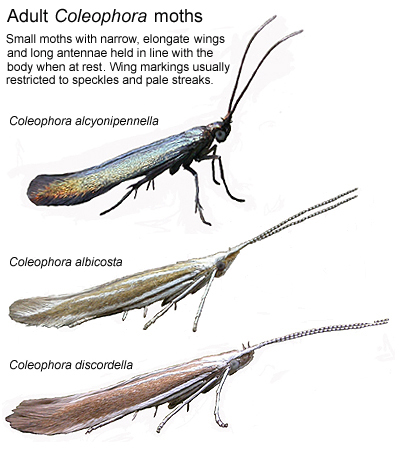 |
|
| ..... | ||
All Coleophoridae moths known to either still occur, or have occurred in Nottinghamshire are listed below. The order of species follows that used in the 2013 Checklist of the Lepidoptera of the British Isles by D. Agassiz, S. Beavan, R. Heckford. |
|
| ..... | |
| 37.005 Coleophora lutipennella (Zeller, 1838) | 37.049 Coleophora anatipennella (Hübner, 1796) |
| 37.006 Coleophora gryphipennella (Hübner, 1796) | 37.050 Coleophora albidella ([Denis & Schiffermüller], 1775) |
| 37.007 Coleophora flavipennella (Duponchel, [1843]) | 37.051 Coleophora kuehnella (Goeze, 1783) |
| 37.009 Coleophora milvipennis (Zeller, 1839) | 37.052 Coleophora ibipennella (Zeller, 1849) |
| 37.011 Coleophora badiipennella (Duponchel, [1843]) | 37.053 Coleophora betulella (Heinemann, [1876]) |
| 37.012 Coleophora limosipennella (Duponchel, [1843]) | 37.055 Coleophora pyrrhulipennella (Zeller, 1839) |
| 37.014 Coleophora coracipennella (Hübner, 1796) | 37.063 Coleophora albicosta (Haworth, 1828) |
| 37.015 Coleophora serratella (Linnaeus, 1761) | 37.066 Coleophora laricella (Hübner, [1817]) |
| 37.016 Coleophora spinella (Schrank, 1802) | 37.068 Coleophora adjunctella (Hodgkinson, 1882) |
| 37.022 Coleophora lusciniaepennella (Treitschke, 1833) | 37.071 Coleophora glaucicolella (Wood, 1892) |
| 37.026 Coleophora violacea (Ström, 1783) | 37.072 Coleophora otidipennella (Hübner, [1817]) |
| 37.027 Coleophora potentillae (Elisha, 1885) | 37.073 Coleophora alticolella (Zeller, 1849) |
| 37.028 Coleophora juncicolella (Stainton, 1851) | 37.080 Coleophora virgaureae (Stainton, 1857) |
| 37.030 Coleophora binderella (Kollar, 1832) | 37.081 Coleophora therinella Tengström, 1848 |
| 37.032 Coleophora albitarsella (Zeller, 1849) | 37.083 Coleophora saxicolella (Duponchel, [1843]) |
| 37.033 Coleophora trifolii (Curtis, 1832) | 37.084 Coleophora sternipennella (Zetterstedt, 1839) |
| 37.034 Coleophora frischella (Linnaeus, 1758) | 37.090 Coleophora artemisicolella (Bruand, [1855]) |
| 37.035 Coleophora alcyonipennella (Kollar, 1832) | 37.093 Coleophora peribenanderi (Toll, 1943) |
| 37.038 Coleophora lineolea (Haworth, 1828) | 37.098 Coleophora inulae (Wocke, [1876]) |
| 37.039 Coleophora hemerobiella (Scopoli, 1763) | 37.102 Coleophora argentula (Stephens, 1834) |
| 37.040 Coleophora lithargyrinella (Zeller, 1849) | 37.103 Coleophora follicularis (Vallot, 1802) |
| 37.042 Coleophora saturatella (Stainton, 1850) | 37.104 Coleophora adspersella Benander, 1939 |
| 37.044 Coleophora discordella (Zeller, 1849) | 37.106 Coleophora paripennella (Zeller, 1839) |
| 37.048 Coleophora mayrella (Hübner, [1813]) | ..... |
| ..... | |
| Identification
Unless bred through to adult from the larval stage, the identification of any adult Coleophorid is only reliably done by dissection of the genitalia. Most Coleophoridae are readily identifiable by their larval cases (most of which are characteristically distinct) and by the host plant. A few species are more liberal in their choice of foodplant, so some caution has to be used. Below are four Coleophora larval cases, all constructed by a cut section of rolled leaf. A typical Psychidae case is also illustrated, which is a basic case of silk, on to which fragments of Lichen, plant materials or insect fragments may be attached. |
||
| ..... | ||
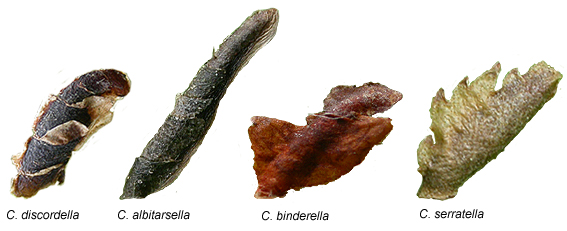 |
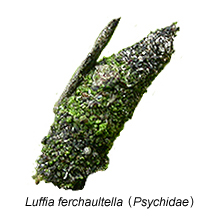 |
|
| ..... | ||
| Coleophoridae
life-cycle - a brief overview Coleophora females lay their eggs on the leaves, or (in the case of those with Rushes or Sedges as foodplant) the flowers or seed heads of the preferred foodplant. On hatching, the young larva either mines into the leaf initially, or constructs a portable case for protection. Cases are made from a cut out section of leaf which is then rolled into shape, but seed cases and or flower petals are used by some species. The larva lives and feeds from within each case it constructs, often constructing a new case as growth continues, or by frequently expanding the original case. The early cases of some species are often very different to the final case produced and larval cases can vary considerably in appearance, depending on the chosen foodplant. Coleophora lineolea is perhaps the most extreme, but an excellent example of this, when feeding on either Hedge Woundwort (Stachys sylvatica) or Lambs' ear (Stachys byzantina). The pupa of all Coleophoridae and Psychidae moths are formed within the case. Further information on Nottinghamshire's Psychidae moths can be found via the link at the bottom of this page. |
||
| 37.005 ... B&F 0490 Coleophora lutipenella (Zeller, 1838) |
| Nottinghamshire status .....Common at Eakring and other sites visited. Larval case photographed on Oak, 25/05/05. |
| ....... |
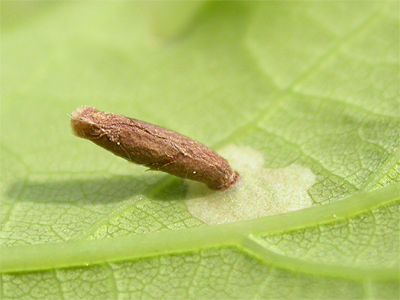 |
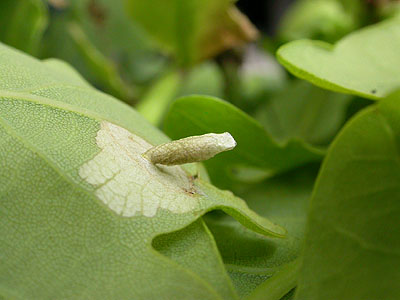 |
|
| 37.006 ... B&F 0490 Coleophora gryphipenella (Hübner, 1796) |
||
| Nottinghamshire status .....Common, but we found this Coleophora difficult to locate initially, but have since recorded it at a number of sites in the county. Larval case photographed on Rose sp at Hills and Holes SSSI on 19/10/13. | ||
| ....... | ||
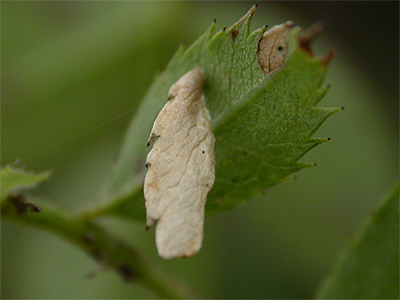 |
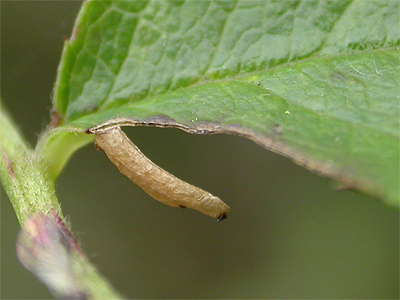 |
|
| 37.009 ... B&F 0490 Coleophora milvipennis (Zeller, 1839) |
||
| Nottinghamshire status .....Unknown. Currently just two Sherwood Forest NNR records. Larval case photographed on a seedling Birch at Sherwood Heath on 24/10/10. | ||
| ....... | ||
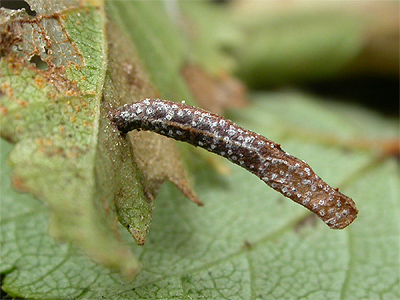 |
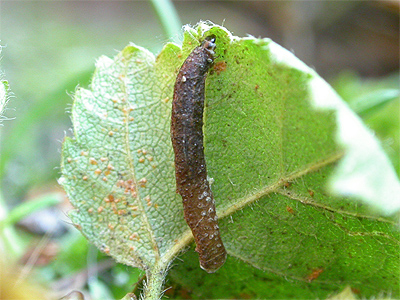 |
|
| 37.011 ... B&F 0490 Coleophora badiipennella (Duponchel, 1843) |
||
| Nottinghamshire status .....Uncommon. This larval case photographed on Elm near Kersall on 06/02/04, remains the only case of Coleophora badiipennella we have recorded, despite much searching in recent years. | ||
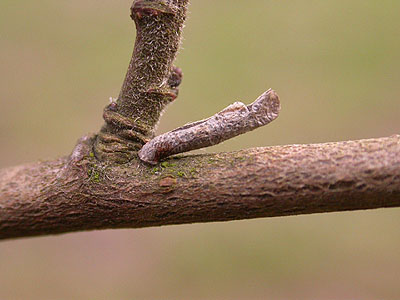 |
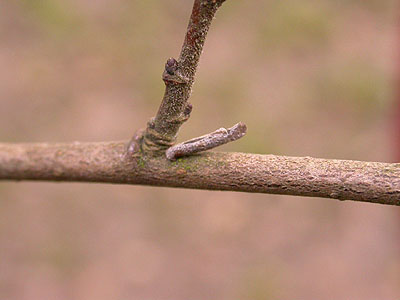 |
|
| 37.012 .... B&F 0499 Coleophora limosipennella (Duponchel, [1843]) |
||
| Nottinghamshire status ..... Uncommon and only recorded as being new to Nottinghamshire in 2007, when a larval case was found at Bunny (per Dave Budworth). There appear to have been no further records until we found three larval cases at different stages of development, on a small Elm growing along Peafield Lane near Market Warsop in early June 2016. | ||
| ....... | ||
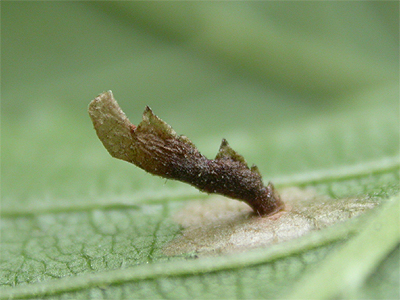 |
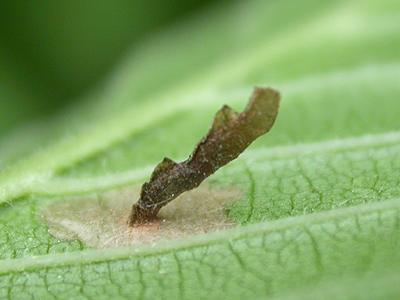 |
|
|
37.014 .... B&F 0494
Coleophora coracipennella
(Hübner, 1796) |
||
| Probably rare in Nottinghamshire, rather than being under recorded and although on the Nottinghamshire species list collated and maintained on this website, there are no traceable records. This larval case was found on Blackthorn Prunus spinosa, near Market Warsop in late May 2021, but there are several other Coleophoras which feed on Blackthorn and closely related woody plants. | ||
| ....... | ||
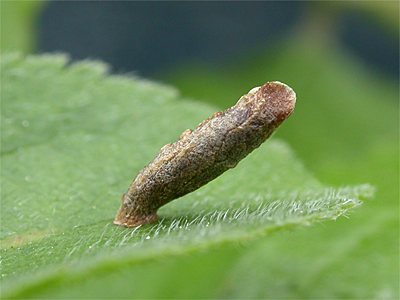 |
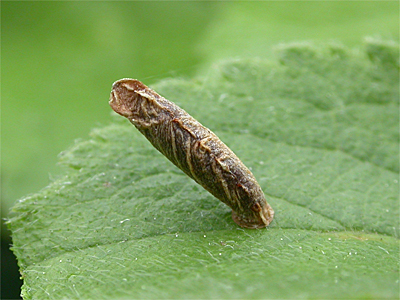 |
|
| 37.015 ... B&F 0490 Coleophora serratella (Linnaeus, 1761) |
| Nottinghamshire status .....Abundant wherever Birch grows. Single trees in urban areas, usually hold this species. Probably the most easily found Coleophorid. Larval case photographed on Birch, 27/04/05. |
| ....... |
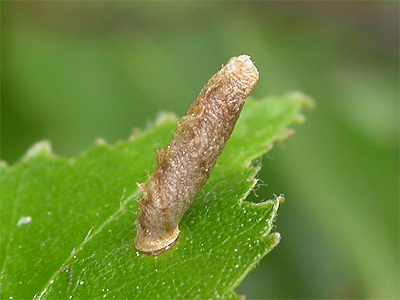 |
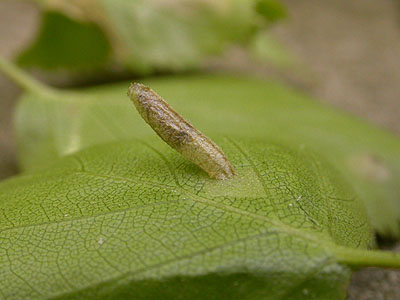 |
|
| 37.016 ... B&F 0490 Coleophora spinella (Schrank, 1802) |
| Nottinghamshire status .....Found to be fairly common. Larval case photographed on Hawthorn, 22/05/05. |
| ....... |
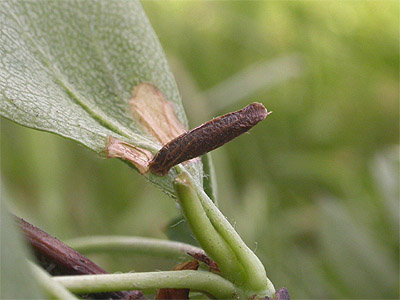 |
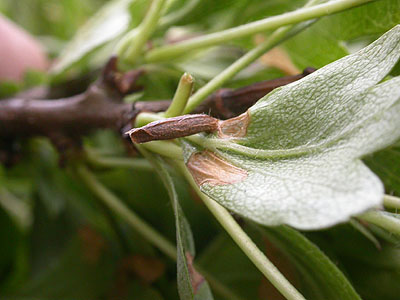 |
|
| 37.022 ... B&F 0490 Coleophora lusciniaepennella (Treitschke, 1833) |
| Nottinghamshire status .....Common throughout much of Nottinghamshire, being present on several former Colliery spoil heaps. Larval case photographed on Sallow at Warsop Main Pit Top on 26/05/06. |
| ....... |
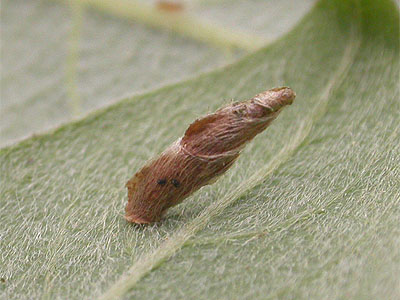 |
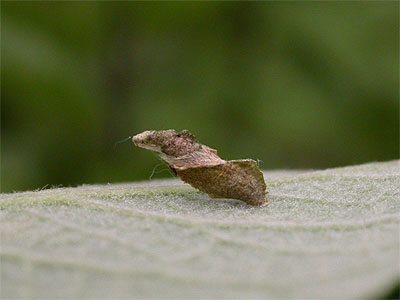 |
|
| 37.026 ... B&F 0490 Coleophora violacea (Ström, 1783) |
||
| Nottinghamshire status .....Probably common, but easily overlooked. Larval case photographed on Ground Ivy at Market Warsop on 20/09/11, but more regularly found feeding on Bramble. | ||
| ....... | ||
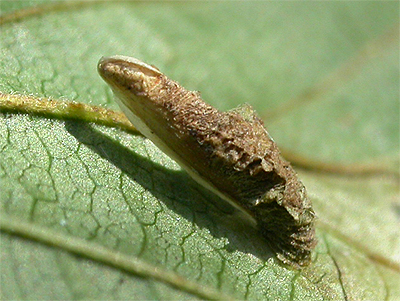 |
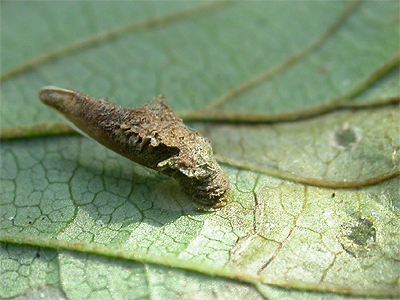 |
|
| 37.027 ... B&F 0490 Coleophora potentillae (Elisha, 1885) |
||
| Nottinghamshire status .....Common. Larval case photographed on Agrimony at Budby South Forest, 15/11/10. | ||
| ....... | ||
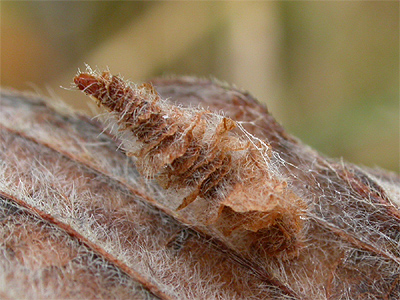 |
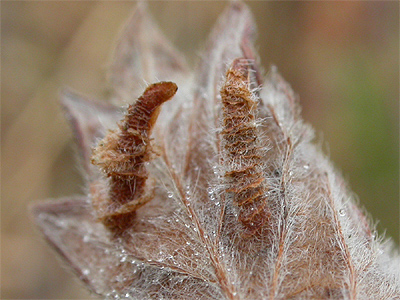 |
|
| 37.028 ... B&F 0510 Coleophora juncicolella (Stainton, 1851) |
||
| Nottinghamshire status .....Not known to have previously occurred before in Nottinghamshire, it was suggested we look for the larval cases of Coleophora juncicolella, after it was recently recorded for the first time from Lincolnshire (April 2015) by Martin Gray. Two small larval cases were soon swept from Heather on Budby South Forest in mid-April 2015. Likely to turn be present at other heathland sites in the Sherwood Forest area. | ||
| ....... | ||
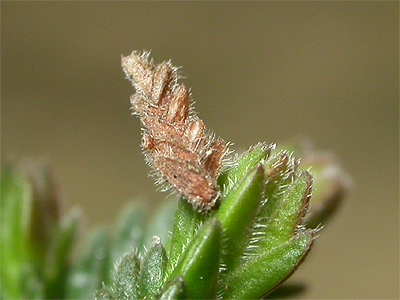 |
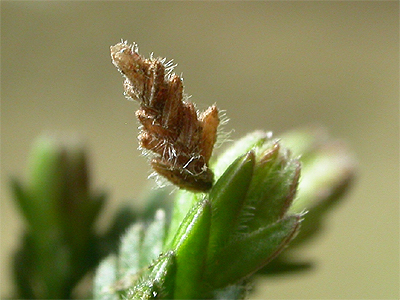 |
|
| 37.032 ... B&F 0490 Coleophora albitarsella (Zeller, 1849) |
||
| Nottinghamshire status .....Status currently unknown in Nottinghamshire, but possibly quite common. Larval case photographed on Ground Ivy growing in the lee of a hedge on 29/10/10. | ||
| ....... | ||
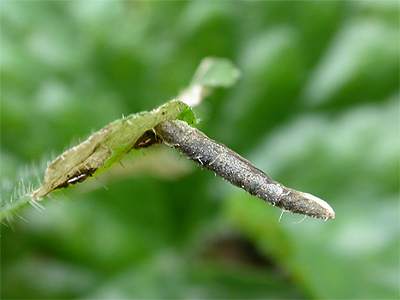 |
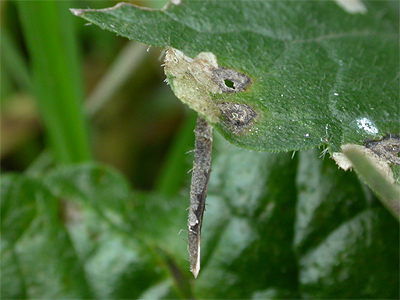 |
|
| 37.039 ... B&F 0490 Coleophora hemerobiella (Scopoli, 1763) |
||
| Nottinghamshire status .....Seems fairly common at several Nottinghamshire sites. Larval case photographed on Hawthorn, 05/05/07. | ||
| ....... | ||
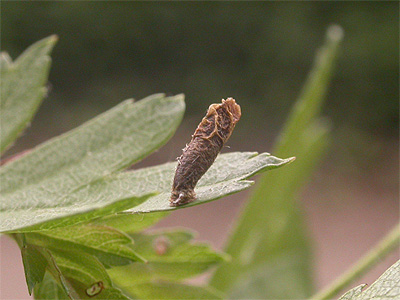 |
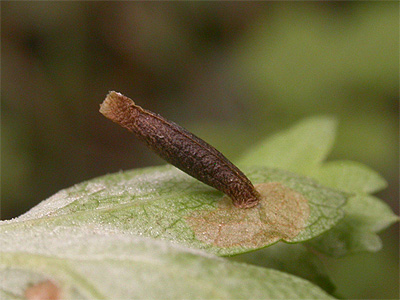 |
|
| 37.038 .... B&F 0522 Coleophora lineolea (Haworth, 1828) |
||
| Nottinghamshire status ..... Sometimes referred to as being common where it's foodplant occurs, although there are few Nottinghamshire records and it is doubtless very much under-recorded. Larval cases found on Hedge Woundwort (Stachys sylvatica) but occur on Lambs' ear (Stachys byzantina) in gardens. | ||
| ....... | ||
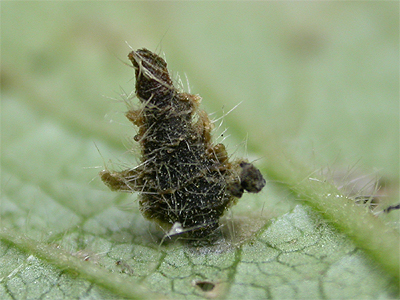 |
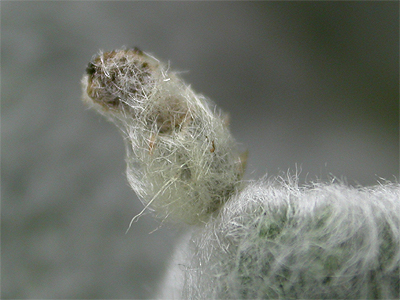 |
|
| 37.044 ... B&F 0490 Coleophora discordella (Zeller, 1849) |
||
| Nottinghamshire status ..... Common and generally found wherever the larval foodplant grows, even on brownfield sites. Larval case photographed on Bird's-foot Trefoil, 23/09/13. | ||
| ....... | ||
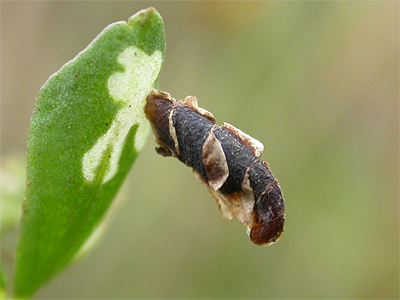 |
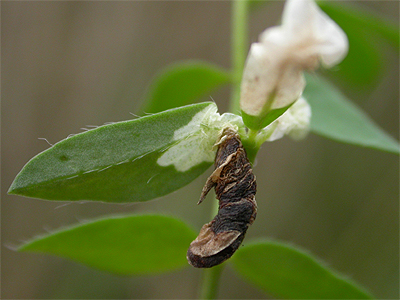 |
|
| 37.049 ... B&F 0490 Coleophora anatipennella (Hübner, 1796) |
||
| Nottinghamshire status .....Probably common in much of Nottinghamshire. Larval case photographed on Blackthorn, 15/05/10. | ||
| ....... | ||
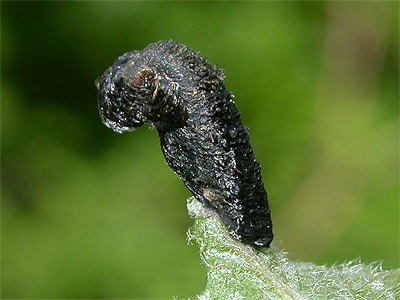 |
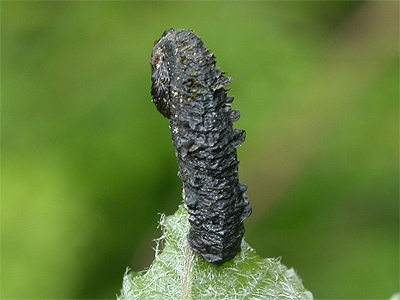 |
|
| 37.053 ... B&F 0490 Coleophora betulella (Heinemann, 1876) |
||
| Nottinghamshire status .....Possibly restricted in Nottinghamshire. Larval case photographed on Birch, 09/05/10. | ||
| ....... | ||
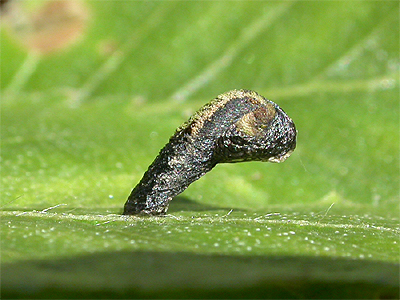 |
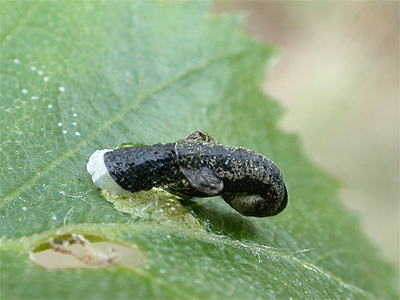 |
|
| 37.055 ... B&F 0490 Coleophora pyrrhulipennella (Zeller, 1839) |
| Nottinghamshire status .....Can be difficult to find in large areas of Heather, but the black larval cases are quite conspicuous. Restricted in Nottinghamshire through available heathland habitat. Larval case photographed on Heather at Budby South Forest on 09/05/10. |
| ....... |
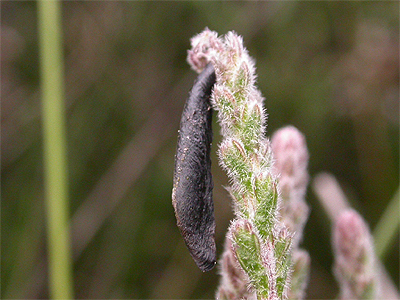 |
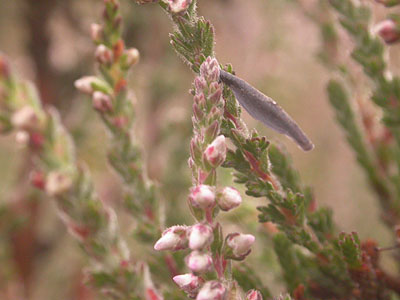 |
|
| 37.063 .... B&F 0544 Coleophora albicosta (Haworth, 1828) |
||
| Nottinghamshire status .....By no means restricted to the heathlands of Sherwood Forest and probably common at many sites with well established stands of Gorse. The larval case overwinters in the old flowers and is one of the most difficult to find. Larval case photographed at Warsop Main Pit Top January 2019 | ||
| ....... | ||
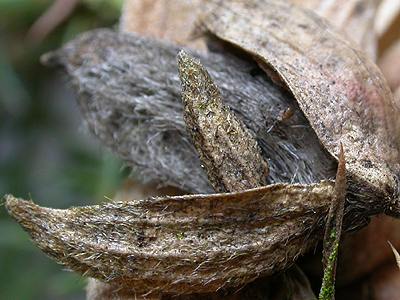 |
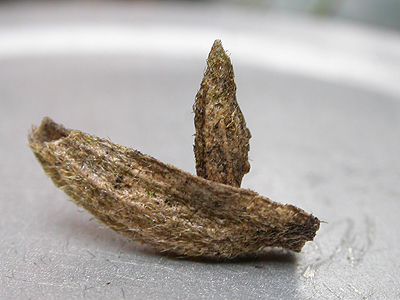 |
|
| 37.066 ... B&F 0490 Coleophora laricella (Hübner, 1817) |
||
| Nottinghamshire status .....Probably common in forestry areas containing stands of Larch. Larval case photographed on Larch, 31/05/09. | ||
| ....... | ||
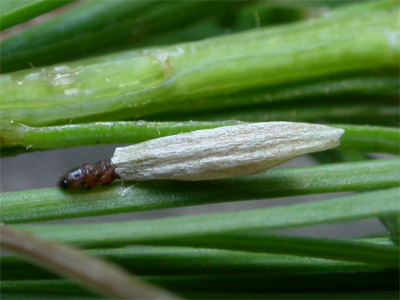 |
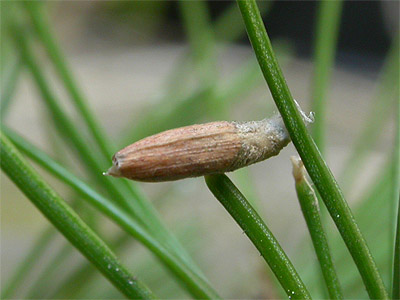 |
|
| 37.071 .... B&F 0582 Coleophora
glaucicolella (Wood, 1892) |
||
| Nottinghamshire status ..... Probably often overlooked among the large numbers of Coleoophora alticolella at many sites. The cases are visually identical, but the larvae of C. glaucicolella and C. alticolella, can be determined by extracting the larva from its case. | ||
| ....... | ||
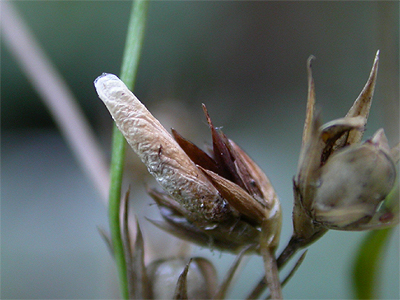 |
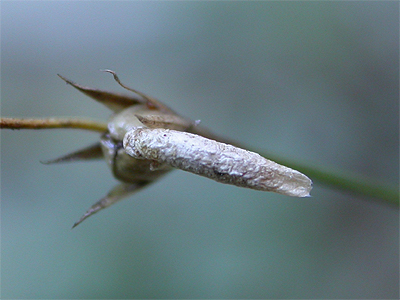 |
|
| 37.073 ... B&F 0490 Coleophora alticolella (Zeller, 1849) |
||
| Nottinghamshire status .....Very common to abundant in areas of Juncus throughout Nottinghamshire, where several larval cases can often be found on old seed heads. Larval case photographed on Juncus sp, 11/03/06. | ||
| ....... | ||
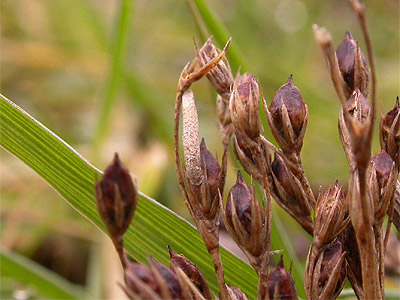 |
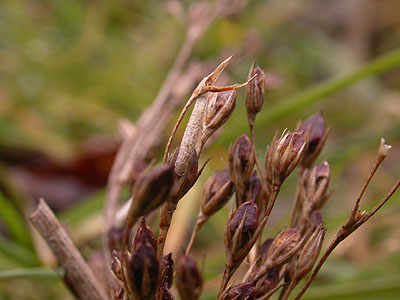 |
|
| 37.083 .... B&F 0565 Coleophora saxicolella (Duponchel, 1843) |
||
| Nottinghamshire status ..... Coleophora saxicolella is listed as having occurred previously in Nottinghamshire, but we had to rear this larva through to confirm the ID. The larval cases are identical to several other Coleophora sp, often being found on brownfield sites. Larval case photographed on Atriplex sp at New Ollerton, October 2013 | ||
| ....... | ||
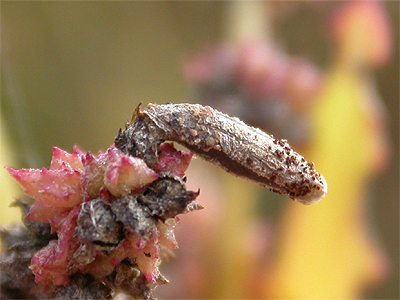 |
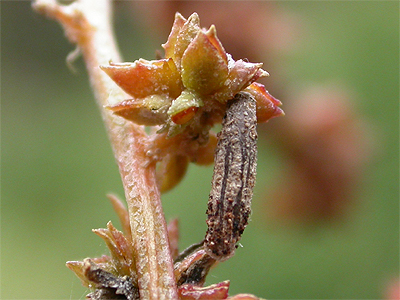 |
|
| 37.090 ... B&F 0490 Coleophora artemisicolella (Bruand, 1855) |
||
| Nottinghamshire status ..... Probably widespread over much of Nottinghamshire, yet this larval case represented the first county record. The larval case (made from an empty seedhead) proved to be one of the most difficult of all the Coleophoras to locate. Larval case photographed on Artemisia vulgaris, 08/10/13. | ||
| ....... | ||
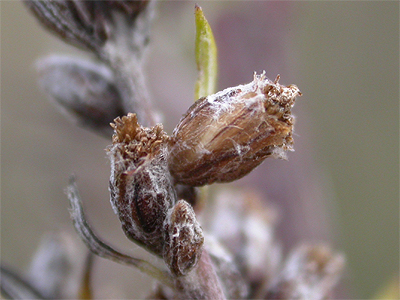 |
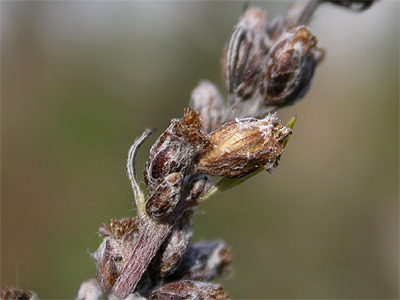 |
|
| 37.093 ... B&F 0490 Coleophora peribenanderi (Toll, 1943) |
||
| Nottinghamshire status .....Common, often being found on brownfield sites. Larval case photographed on Creeping Thistle (Cirsium arvensis) on 06/09/09. | ||
| ....... | ||
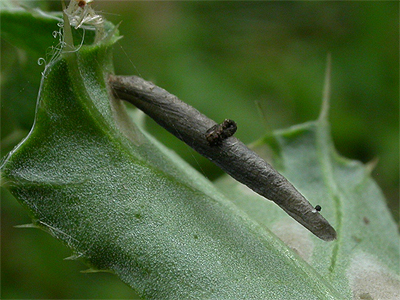 |
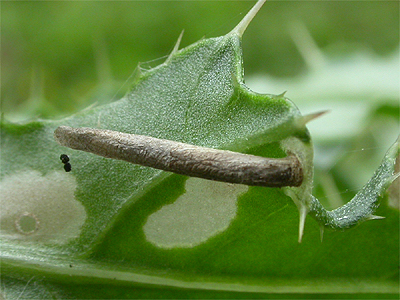 |
|
| 37.098 ... B&F 0490 Coleophora inulae (Wocke, 1876) |
||
| Nottinghamshire status .....A surprising addition to the Nottinghamshire list in September 2013, when we found two full grown larval cases on Fleabane (Pulicaria dysenterica) at Warsop Main Pit Top. This is a very local moth of Nationally notable A status, believed to be declining and found at only a handful of UK sites. Coleophora inulae has a two year life cycle and the larvae are full grown by the July of their second year. Larval case photographed on Fleabane, 22/09/13. | ||
| ....... | ||
 |
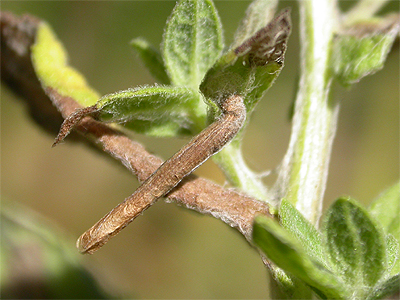 |
|
| 37.102 ... B&F 0490 Coleophora argentula (Stephens, 1834) |
||
| Nottinghamshire status .....Very common at many sites where Yarrow grows and one of the most easily found Coleophoras. Larval cases photographed on Achillea millefolium, 07/11/10. | ||
| ....... | ||
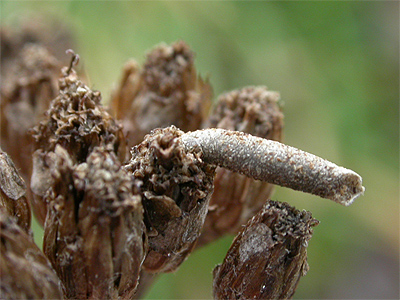 |
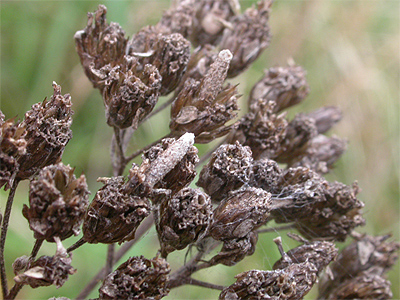 |
|
| 37.106 ... B&F 0490 Coleophora paripennella (Zeller, 1839) |
||
| Nottinghamshire status .....Possibly quite common. Larval case photographed on Centaurea sp, 03/05/08. | ||
| ....... |
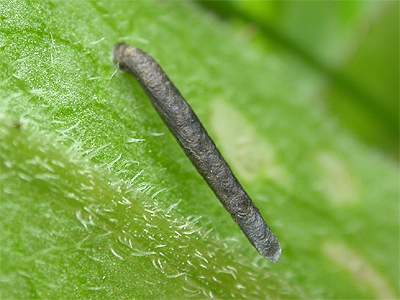 |
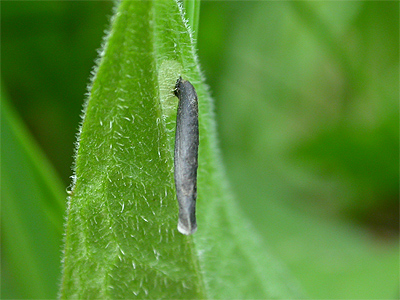 |